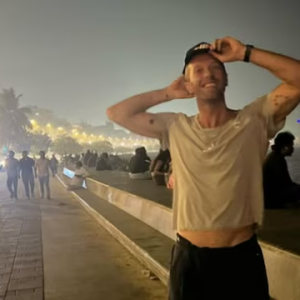Gwen Stefani’s Empowering Advice for Aspiring Female Artists: Tips to Rock the Music Industry
In the ever-evolving landscape of the music industry, Gwen Stefani stands out not just as an iconic performer, but as a beacon of inspiration for aspiring female artists. With a career spanning decades—from her ground-breaking days as the frontwoman of No Doubt to her successful solo endeavors—Stefani has seen and conquered the ups and downs of the music world. In her recent interviews and panels throughout 2025, she shared invaluable advice to empower the next generation of female musicians. Here’s what she had to say.
Find Your Unique Voice
First and foremost, Stefani emphasizes the importance of authenticity. "You have to find your unique sound and not be afraid to showcase it," she shared in a panel discussion at the Women in Music Summit. For Stefani, blending genres and embracing individuality led her to develop a style that reshaped pop and rock music. Aspiring artists are encouraged to experiment and draw inspiration from their personal experiences. "Your story is your strength, so flaunt it!"
Embrace Vulnerability
In a world that often glorifies perfection, Stefani reminds young women in music to embrace their vulnerabilities. "It's okay to feel scared or unsure," she said during a Q&A session. "Being open about your feelings can resonate with others and create a real connection." Stefani's own lyrical journey reflects her struggles and triumphs, touching on themes of love, heartbreak, and self-discovery. She encourages budding artists to lean into their emotions and use them as a source of inspiration for songwriting.
Build a Supportive Network
One key element of Stefani's success has been the support she has received from her peers and collaborations with other artists. "Don't hesitate to lean on your fellow musicians," she advised. "Creating a network of supportive individuals is crucial. Surround yourself with people who believe in your talent and uplift you." She often collaborates with fellow female artists, advocating for unity and support within the industry.
Invest in Yourself
Stefani also highlighted the importance of personal and professional development. "You should always be a student of your craft," she said. Taking vocal lessons, honing songwriting skills, and learning about the business side of music are vital for growth. "Invest in yourself—your voice, your image, your business acumen. The industry is tough, but equipping yourself with the right tools will make a difference."
Don’t Fear Failure
Fear of failure can paralyze even the most talented artists, but Stefani urges aspiring musicians not to let it deter them. "Every setback is an opportunity to learn and grow," she explained. "I’ve faced rejections and tough moments, but they shaped my career." By reframing failure as a stepping stone rather than an endpoint, young women can cultivate resilience and emerge stronger in their artistic journeys.
Stay True to Your Vision
While the music industry can be rife with pressure to conform, Stefani stresses the importance of staying true to your artistic vision. "It’s easy to get swayed by trends or what others think," she cautioned. "But ultimately, you must create music that feels real to you. Don't chase the latest sound; set the trend!" Her original sound, which combines elements of ska, pop, and punk, is a prime example of the power of staying faithful to one’s unique style.
Use Your Platform for Good
Finally, Stefani emphasizes the significance of using one’s voice to advocate for important issues. As a proud advocate for various causes, including gender equality and mental health awareness, she encourages aspiring artists to leverage their influence for positive change. "Your platform is powerful—use it to inspire others, challenge the status quo, or uplift those who may not have a voice," she said passionately. She believes that music is a reflection of society, and artists have a responsibility to contribute meaningfully to the conversation.
Conclusion
Gwen Stefani's multi-faceted career and remarkable resilience serve as an inspiring blueprint for aspiring female artists navigating the music industry today. Her insightful advice advocates for authenticity, vulnerability, community, personal growth, and empowerment. It’s a message that resonates powerfully, reminding the next generation of artists to embrace their unique stories and make impactful contributions to music and beyond.
As the music landscape continues to evolve, Stefani's words shine brightly, illuminating a path for the hopeful and ambitious singers, songwriters, and performers ready to make their mark. With Gwen Stefani’s empowering advice in mind, young women in music can confidently take the stage, rock the industry, and create the soundtrack of their lives.
Now, if that doesn't inspire you to pick up that mic and unleash your inner superstar, we don't know what will! It's time to tune in and get ready to shine.


